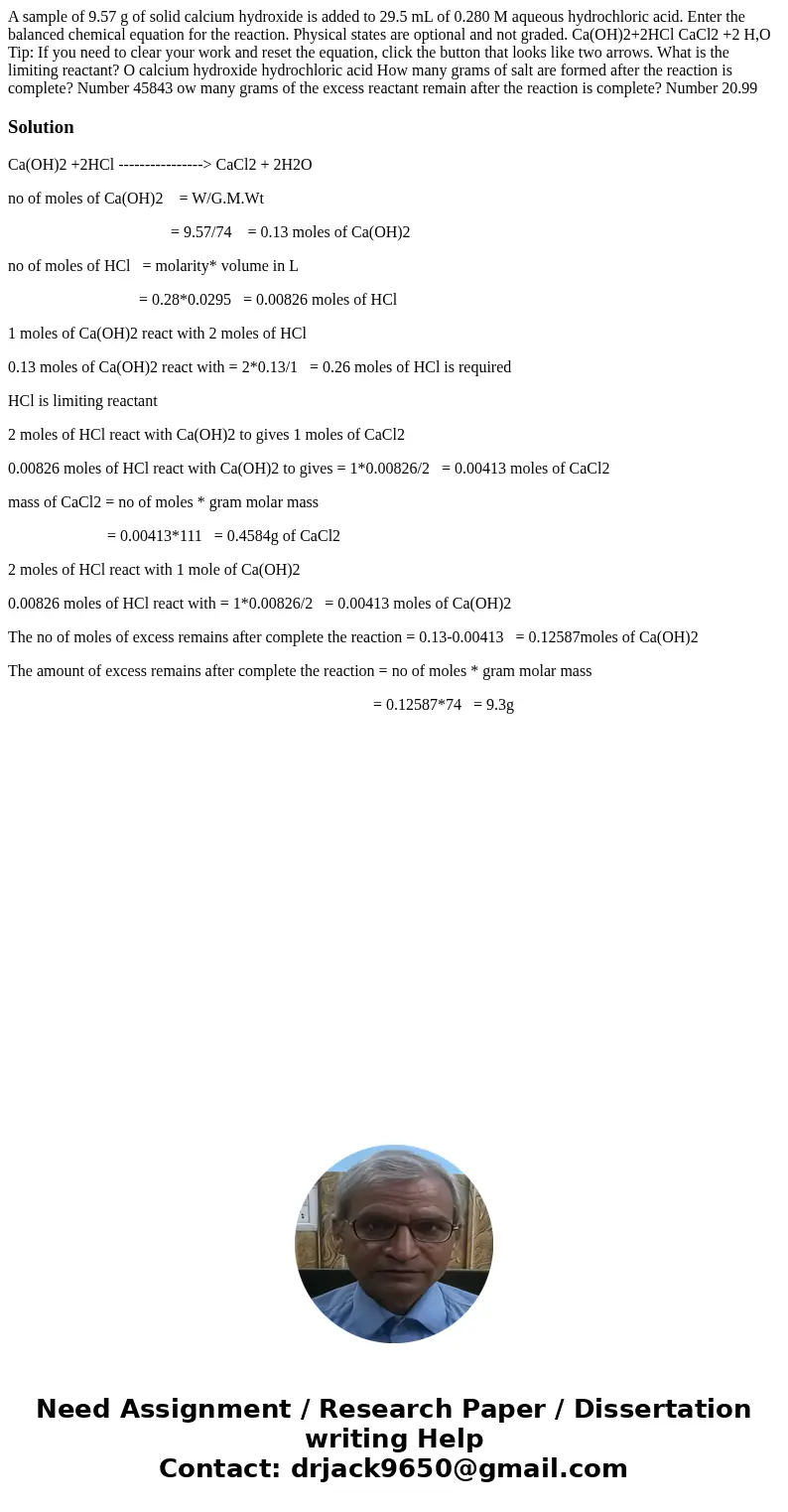A sample of 957 g of solid calcium hydroxide is added to 295
Solution
Ca(OH)2 +2HCl ----------------> CaCl2 + 2H2O
no of moles of Ca(OH)2 = W/G.M.Wt
= 9.57/74 = 0.13 moles of Ca(OH)2
no of moles of HCl = molarity* volume in L
= 0.28*0.0295 = 0.00826 moles of HCl
1 moles of Ca(OH)2 react with 2 moles of HCl
0.13 moles of Ca(OH)2 react with = 2*0.13/1 = 0.26 moles of HCl is required
HCl is limiting reactant
2 moles of HCl react with Ca(OH)2 to gives 1 moles of CaCl2
0.00826 moles of HCl react with Ca(OH)2 to gives = 1*0.00826/2 = 0.00413 moles of CaCl2
mass of CaCl2 = no of moles * gram molar mass
= 0.00413*111 = 0.4584g of CaCl2
2 moles of HCl react with 1 mole of Ca(OH)2
0.00826 moles of HCl react with = 1*0.00826/2 = 0.00413 moles of Ca(OH)2
The no of moles of excess remains after complete the reaction = 0.13-0.00413 = 0.12587moles of Ca(OH)2
The amount of excess remains after complete the reaction = no of moles * gram molar mass
= 0.12587*74 = 9.3g

 Homework Sourse
Homework Sourse